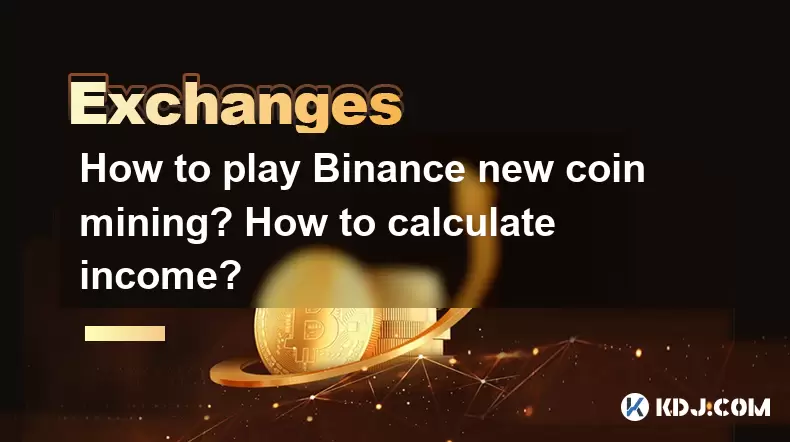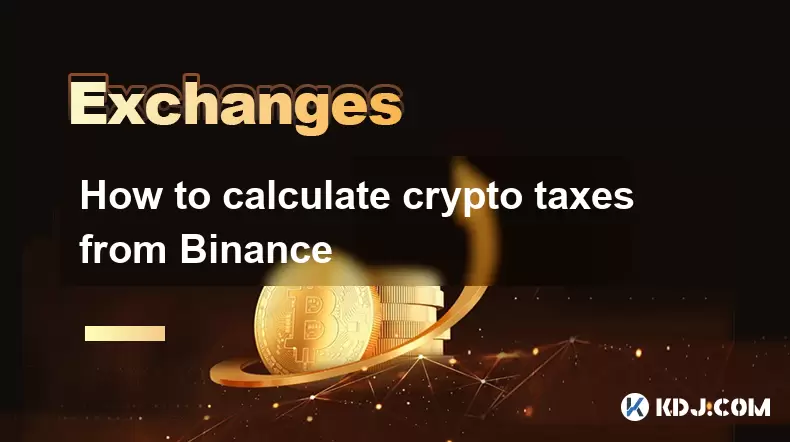-
 Bitcoin
Bitcoin $117500
2.15% -
 Ethereum
Ethereum $3911
6.19% -
 XRP
XRP $3.316
10.79% -
 Tether USDt
Tether USDt $1.000
0.01% -
 BNB
BNB $787.2
2.24% -
 Solana
Solana $175.2
4.15% -
 USDC
USDC $0.9999
0.00% -
 Dogecoin
Dogecoin $0.2225
8.40% -
 TRON
TRON $0.3383
0.28% -
 Cardano
Cardano $0.7868
6.02% -
 Stellar
Stellar $0.4382
9.34% -
 Hyperliquid
Hyperliquid $40.92
7.56% -
 Sui
Sui $3.764
7.63% -
 Chainlink
Chainlink $18.48
10.66% -
 Bitcoin Cash
Bitcoin Cash $582.1
1.88% -
 Hedera
Hedera $0.2601
6.30% -
 Avalanche
Avalanche $23.33
4.94% -
 Ethena USDe
Ethena USDe $1.001
0.02% -
 Litecoin
Litecoin $122.3
2.04% -
 UNUS SED LEO
UNUS SED LEO $8.969
-0.27% -
 Toncoin
Toncoin $3.339
0.86% -
 Shiba Inu
Shiba Inu $0.00001287
4.30% -
 Uniswap
Uniswap $10.43
7.38% -
 Polkadot
Polkadot $3.861
5.08% -
 Dai
Dai $1.000
0.02% -
 Bitget Token
Bitget Token $4.513
3.41% -
 Monero
Monero $267.7
-6.18% -
 Cronos
Cronos $0.1499
4.14% -
 Pepe
Pepe $0.00001110
5.15% -
 Aave
Aave $284.9
8.28%
How to play Binance new coin mining? How to calculate income?
Stake BNB or BUSD in Binance Launchpool to mine new tokens; more stake and smaller pools can yield better returns. Always review project details and risks.
May 18, 2025 at 12:29 pm

Introduction to Binance New Coin Mining
Binance, one of the world's leading cryptocurrency exchanges, offers users the opportunity to participate in new coin mining through its Launchpool and other initiatives. Binance Launchpool allows users to stake their BNB, BUSD, or other supported tokens to earn new tokens from upcoming projects. Understanding how to participate and calculate potential income is crucial for maximizing returns.
How to Participate in Binance New Coin Mining
Participating in Binance's new coin mining is straightforward but requires careful attention to detail. Here’s how you can get started:
Navigate to the Launchpool Section: Log into your Binance account and go to the Launchpool section, which can be found under the "More" tab on the Binance website or app.
Select a Pool: Choose the pool for the new token you want to mine. Binance typically lists multiple pools, each associated with a different upcoming project.
Stake Your Tokens: Decide which tokens you want to stake—BNB, BUSD, or another supported token. Enter the amount you wish to stake and confirm the transaction. Staking periods can vary, so make sure you understand the duration before committing.
Monitor Your Earnings: Once you’ve staked your tokens, you can monitor your earnings in real-time through the Launchpool dashboard. Earnings are typically distributed daily or at the end of the staking period, depending on the project.
Calculating Income from Binance New Coin Mining
Calculating your potential income from Binance new coin mining involves understanding several key factors:
Staking Amount: The amount of BNB, BUSD, or other tokens you stake directly impacts your potential earnings. The more you stake, the more you earn.
Pool Size and Total Rewards: Each pool has a fixed amount of tokens to distribute. The total rewards are divided among all participants based on their stake. Smaller pools with higher rewards can yield better returns.
Staking Duration: The length of time you stake your tokens can influence your earnings. Some projects offer additional rewards for longer staking periods.
APY (Annual Percentage Yield): Binance often provides an estimated APY for each pool. This gives you an idea of potential annual returns based on current pool conditions.
To calculate your income, use the following formula:
[ \text{Income} = \left( \frac{\text{Your Staked Amount}}{\text{Total Staked Amount in Pool}} \right) \times \text{Total Rewards} ]
For example, if you stake 100 BNB in a pool where the total staked amount is 1,000,000 BNB and the total rewards are 1,000,000 new tokens, your income would be:
[ \text{Income} = \left( \frac{100}{1,000,000} \right) \times 1,000,000 = 100 \text{ new tokens} ]
Factors Affecting Your Earnings
Several factors can influence your earnings from Binance new coin mining:
Market Conditions: The value of the new tokens you earn can fluctuate based on market conditions. A rise in token value can significantly boost your returns.
Competition: The number of participants in a pool can affect your share of the rewards. More participants mean a smaller share for each individual.
Tokenomics: The specifics of the new project’s tokenomics, such as total supply and distribution mechanisms, can impact the value and utility of the tokens you earn.
Tips for Maximizing Your Returns
To maximize your returns from Binance new coin mining, consider the following strategies:
Diversify Your Stakes: Instead of putting all your tokens into one pool, spread your stakes across multiple pools to mitigate risk and potentially increase your overall earnings.
Stay Informed: Keep up-to-date with new projects and their potential. Research the teams behind the projects and their roadmaps to make informed decisions.
Monitor and Adjust: Regularly check your earnings and the performance of the pools you’re participating in. Be ready to adjust your stakes based on changing conditions and new opportunities.
Understand the Risks: While new coin mining can be lucrative, it also comes with risks. Never stake more than you can afford to lose, and be aware of the potential for token value fluctuations.
Common Pitfalls to Avoid
Avoiding common pitfalls can help you maintain a successful strategy in Binance new coin mining:
Overcommitting: Staking too much in one pool can lead to significant losses if the project fails or the token value drops. Balance your stakes to manage risk.
Ignoring Tokenomics: Failing to understand the tokenomics of a project can lead to poor investment decisions. Always review the whitepaper and project details before staking.
Chasing High APYs: While high APYs can be tempting, they often come with higher risks. Evaluate the sustainability of the APY and the project’s fundamentals before jumping in.
Frequently Asked Questions
Q: Can I unstake my tokens before the end of the staking period?
A: It depends on the specific pool and project. Some pools allow you to unstake your tokens at any time, while others may have a lock-up period. Always check the terms and conditions of the pool before staking.
Q: How often are rewards distributed in Binance Launchpool?
A: Rewards distribution can vary by project. Some pools distribute rewards daily, while others may distribute them at the end of the staking period. Check the details of each pool for specific information.
Q: Are there any fees associated with participating in Binance new coin mining?
A: Generally, there are no direct fees for participating in Launchpool. However, you may incur transaction fees when staking or unstaking your tokens. Always review the fee structure on the Binance platform.
Q: Can I participate in multiple pools simultaneously?
A: Yes, you can participate in multiple pools at the same time, as long as you have enough tokens to stake in each pool. This can help you diversify your earnings and manage risk more effectively.
Disclaimer:info@kdj.com
The information provided is not trading advice. kdj.com does not assume any responsibility for any investments made based on the information provided in this article. Cryptocurrencies are highly volatile and it is highly recommended that you invest with caution after thorough research!
If you believe that the content used on this website infringes your copyright, please contact us immediately (info@kdj.com) and we will delete it promptly.
- XRP ETF, Bitcoin ETF, and Japan: A New Era for Crypto Investing?
- 2025-08-08 14:30:12
- Crypto, Congress, and Bills: Navigating the Regulatory Landscape in 2025
- 2025-08-08 14:30:12
- Union Jack Oil, Unused Gas, and Bitcoin: A New York Minute on UK's Crypto-Energy Play
- 2025-08-08 14:50:12
- Bitcoin Price: Bullish Flag Points to $123K Breakout?
- 2025-08-08 14:50:12
- Crypto Group's WNBA Dildo Toss: Meme Coin Mania or Just Plain Dumb?
- 2025-08-08 14:55:13
- Stablecoins, Hong Kong, and On-Chain Finance: Navigating the Regulatory Maze
- 2025-08-08 12:30:12
Related knowledge

How to use margin trading on Poloniex
Aug 08,2025 at 09:50am
Understanding Margin Trading on Poloniex

How to use advanced trading on Gemini
Aug 08,2025 at 04:07am
Understanding Advanced Trading on GeminiAdvanced trading on Gemini refers to a suite of tools and order types designed for experienced traders who wan...

How to deposit USD on Bitstamp
Aug 07,2025 at 05:18pm
Understanding Bitstamp and USD DepositsBitstamp is one of the longest-standing cryptocurrency exchanges in the industry, offering users the ability to...

How to use the Kraken Pro interface
Aug 08,2025 at 09:57am
Understanding the Kraken Pro Interface LayoutThe Kraken Pro interface is designed for both novice and experienced traders seeking a streamlined experi...

How to find my transaction ID on Gemini
Aug 08,2025 at 12:50am
Understanding the Transaction ID in Cryptocurrency ExchangesA transaction ID (TXID) is a unique alphanumeric string that identifies a specific transfe...

How to calculate crypto taxes from Binance
Aug 08,2025 at 07:56am
Understanding Cryptocurrency Taxation on BinanceCalculating crypto taxes from Binance requires a clear understanding of how tax authorities classify d...

How to use margin trading on Poloniex
Aug 08,2025 at 09:50am
Understanding Margin Trading on Poloniex

How to use advanced trading on Gemini
Aug 08,2025 at 04:07am
Understanding Advanced Trading on GeminiAdvanced trading on Gemini refers to a suite of tools and order types designed for experienced traders who wan...

How to deposit USD on Bitstamp
Aug 07,2025 at 05:18pm
Understanding Bitstamp and USD DepositsBitstamp is one of the longest-standing cryptocurrency exchanges in the industry, offering users the ability to...

How to use the Kraken Pro interface
Aug 08,2025 at 09:57am
Understanding the Kraken Pro Interface LayoutThe Kraken Pro interface is designed for both novice and experienced traders seeking a streamlined experi...

How to find my transaction ID on Gemini
Aug 08,2025 at 12:50am
Understanding the Transaction ID in Cryptocurrency ExchangesA transaction ID (TXID) is a unique alphanumeric string that identifies a specific transfe...

How to calculate crypto taxes from Binance
Aug 08,2025 at 07:56am
Understanding Cryptocurrency Taxation on BinanceCalculating crypto taxes from Binance requires a clear understanding of how tax authorities classify d...
See all articles

























































































